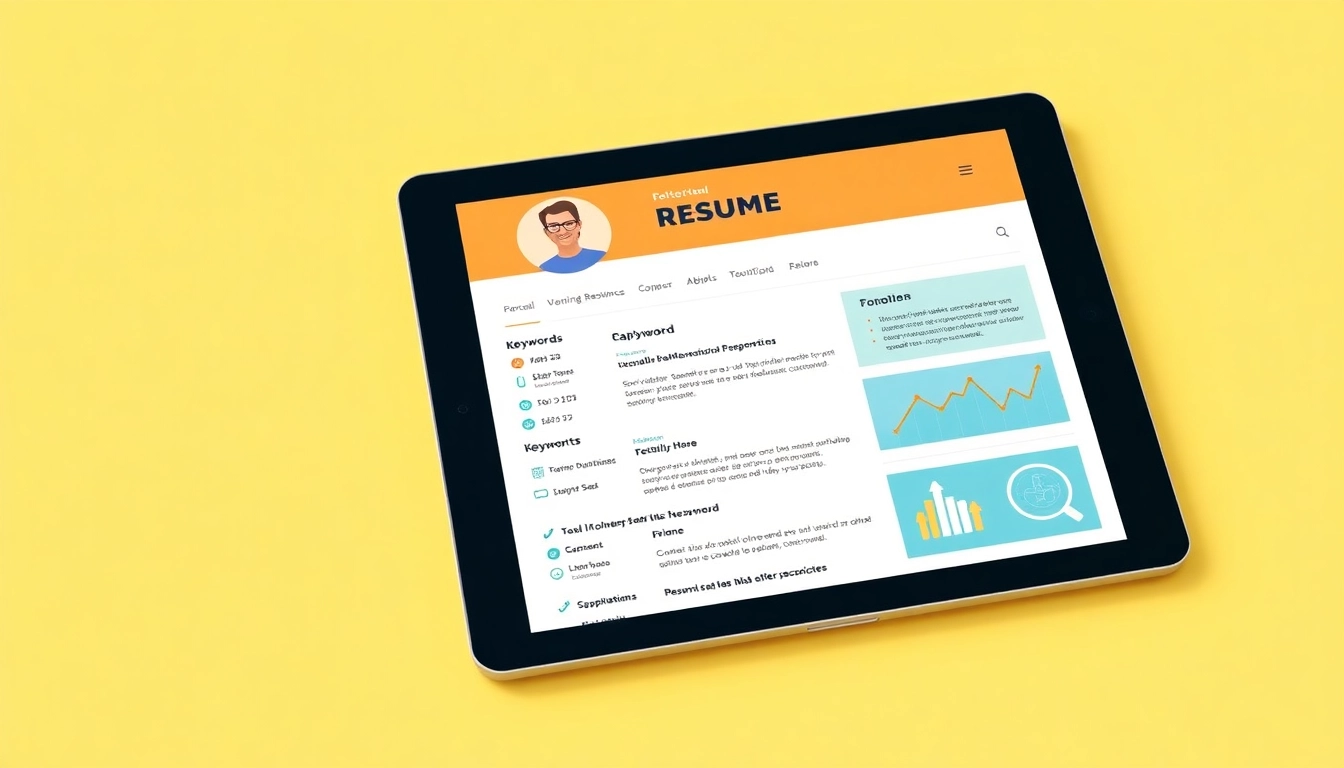In today’s competitive job market, merely having a solid resume or an attractive profile on job portals is often not enough to land your dream role. To truly stand out and maximize your chances of success, mastering job portal optimization is essential. This comprehensive approach involves refining your online presence, leveraging SEO strategies tailored for recruitment platforms, and ensuring your profiles align with industry best practices. In this article, we delve into effective methods for boosting your visibility on major job portals like Naukri, LinkedIn, Monster, and others, alongside crucial tips on crafting compelling resumes and social media profiles for 2025 and beyond.
Understanding the Importance of Job Portal Optimization
Optimizing your job portal profiles is akin to digital branding; it enhances your discoverability by recruiters and hiring managers who rely heavily on search algorithms and keyword matching. As hiring processes increasingly depend on applicant tracking systems (ATS) and SEO-friendly filters, ensuring your profiles are tailored for maximum visibility can dramatically influence the number of interview calls you receive.
The Role of SEO in Job Listings
Search Engine Optimization (SEO) isn’t limited to websites and blogs—it plays a pivotal role in recruitment tech as well. Job portals utilize advanced algorithms that rank profiles based on relevancy, keywords, and activity. Incorporating strategic keywords that mirror industry terminology, job titles, and skills in your profile titles, summaries, and skill sections can significantly improve your chances of appearing at the top of search results. For example, including phrases like “Digital Marketing Strategist,” “Data Science Expert,” or “SAP Certified Professional” aligns with what recruiters are searching for, ensuring your profile shows up in relevant searches.
Key Factors Influencing Visibility on Job Portals
- Keyword Density & Placement: Use industry-specific keywords naturally within your profile summaries, skills, and experience sections.
- Profile Completeness: Ensure that every part of your profile—education, certifications, experience, and social links—is fully filled out.
- Activity & Engagement: Regularly update your profiles, apply for jobs, join relevant groups, and participate in discussions to boost ranking algorithms.
- Recommendations & Endorsements: Garner credible endorsements from colleagues and mentors to enhance credibility and visibility.
Impact of Optimized Profiles on Application Outcomes
Profiles optimized for search not only increase visibility but also improve the quality of matches with recruiters’ searches. Data indicates that candidates with complete, keyword-rich profiles receive up to 60% more viewing opportunities, leading to higher chances of interview invites. Properly optimized profiles act as a magnet for HR systems scanning for the right skills, experience, and cultural fit.
Steps to Enhance Your Job Portal Profiles Effectively
Crafting Keyword-Rich Titles and Summaries
Your profile title is the first thing recruiters see. Make it precise and keyword-focused, such as “Senior Java Developer | Cloud Computing | Agile Practitioner”. Follow with a compelling summary that incorporates industry keywords and highlights your unique value proposition, such as achievements, expertise, and career objectives.
Adding Relevant Skills and Experience for Searchability
Maintain a comprehensive skills list that aligns with targeted roles. Use both broad and niche keywords—like “project management,” “machine learning,” “CRM expertise,” etc. For each experience entry, quantify achievements with metrics to showcase impact, enhancing ATS ranking and attracting recruiter attention.
Utilizing Media and Endorsements to Boost Credibility
Leverage multimedia uploads such as presentations, portfolios, or project files to enrich your profile. Additionally, request recommendations from colleagues or clients to reinforce your competencies and trustworthiness. These endorsements often follow keyword matching and influence profile ranking.
Best Practices for Job Posting and Application Optimization
Using SEO Tactics to Maximize Job Ad Reach
When posting your job profiles or applications, incorporate relevant keywords carefully into your descriptions. Use clear, concise language and avoid keyword stuffing. For example, tailor your headline to match the job description and highlight core skills explicitly mentioned by recruiters.
Structuring Applications for ATS Compatibility
Design your resumes with ATS readability in mind: use standard fonts, avoid graphics or complex formatting, and include keywords from the job description. Use straightforward section headings like “Skills,” “Experience,” “Education,” and ensure dates and titles are consistent across all documents.
Monitoring and Adjusting Strategies Based on Metrics
Regularly analyze profile views, application responses, and interview invitations. Use platform analytics or third-party tools to understand what keywords or sections attract the most attention. Refining your profile periodically ensures optimal visibility over time.
Leveraging Social Media and Cross-Platform Techniques
Building Consistent Profiles Across Channels
Align your LinkedIn, Twitter, and other social handles with your job portal profiles. Use uniform branding, profile images, and consistent professional headlines. Cross-link these profiles to boost overall online visibility and recognition.
Optimizing Social Handles for Recruitment Engines
Optimize your social media bios and posts with industry-specific keywords. Share relevant content and insights that demonstrate thought leadership. Recruiters often search social platforms; a well-curated profile can attract inbound inquiries.
Engaging with Communities for Greater Exposure
Join professional groups, participate in discussions, and share your accomplishments. Engagement increases profile visibility and positions you as an active, industry-aware professional.
Evaluating and Improving Your Overall Online Presence
Regular Profile Audits & Keyword Updates
Conduct periodic reviews of all profiles to ensure consistency, relevance, and keyword alignment. Refresh summaries and skills as your expertise expands.
Managing Online Reputation & Professional Branding
Maintain a positive online presence: set privacy controls, share industry achievements, blog or write articles, and solicit endorsements. A reputable digital footprint influences recruiter perception.
Measuring Impact & Refining Strategies
Track engagement metrics, response rates, and interview invitations. Use feedback and data insights to tweak your profiles, keywords, and activity levels for continual improvement.
